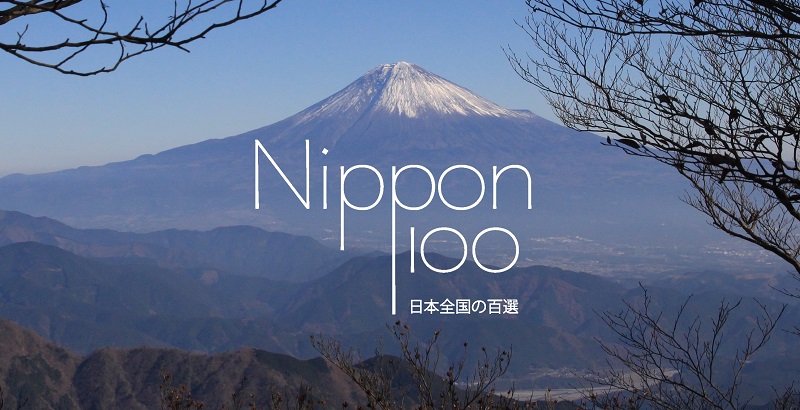In the heart of Gifu, Gujo town overlooked by Hachiman castle is not as known as the prefecture’s gems, Shirakawa and Takayama. But Gujo-Hachiman is definitely worth the visit for at least three reasons. The village is famous for its pure and clear spring water, for its dance matsuri (one of Japan’s three biggest) and for being the birthplace of food replicas, consistently produced there since their invention in the 1930s.
Gujo-Hachiman is not one of the official Heisei 100 landscapes. But while we were traveling Gifu prefecture for the Nippon100 challenge, we had the chance to stop by. Among Japan’s many traditional and charming villages, Gujo has got something more.
At the beginning was the Hachiman castle, strategically built on a hill in 1559 and destroyed at the outset of Meiji period. The tiny castle was finally rebuilt in 1933, and is officially “Japan’s oldest rebuilt wood castle”.

And at the foot of the castle, at the junction of three rivers and several springs, the village began to grow. With so many water sources, the inhabitant created a complicated and convenient network of canals, which has been used for more than 400 years. And it is still used nowadays. Gujo’s water is thus famous in whole Japan, along with its ayu fish, one of Japan’s finest.


 |
 |

Clear water is definitely not the only characteristic of Gujo. Every summer, many visitors come to the village for Gujo Odori, the local o-bon dancing festival, known for being the longest in the country. Thirty-two evenings/nights of dance are held in the summer, from mid-July to mid-September. With the highlight from 13th to 16th August: the village is at that period dancing continuously from 8pm to early morning.

Discovering Gujo Odori and its traditional dances is available all year round thanks to the Gujo Hachiman Hakurankan City Museum (entrance: 520 yens). Several demonstrations in which the public can play a part are displayed everyday.

But Gujo has another highlight and a rather unexpected one, food replicas (or “fake food”). Since the 1930s when it began, the more recent feature of the village has almost became another kind of Japanese traditional handicraft. Food replicas are now to be seen in front of restaurants all over Japan. And the original idea and mass production was from Gujo. Everything began when Ryuzo Iwaasaki accidentally dropped some wax in water and noticed the drop took the shape of a sakura flower.
Nowadays, more than half of Japan food replicas are still produced in Gujo-Hachiman, but not in wax anymore. Contemporary replicas are made of plastic.

 |
 |

 |
 |

Several workshops are open to tourists, to discover and even try this modern art. Shokuhin Sample Kobo is conveniently enough located in the Gujo’s center, while the Iwasaki sample Village is not far from the train station.

How to get there?
The easiest way to discover Gujo-Hachiman is to reach first Nagoya. From there, Highway buses running from Meitetsu Bus Center (next to the JR station) to Shirakawa-go do stop in Gujo’s center (stop name is Jokamachi-Plaza). The many buses running between Takayama and Nagoya also reach Gujo on their way (stop name Gujo-Hachiman Inter). A journey of about 1h30 and 1900 yen from Nagoya, or 75 minutes and 1520 yens from Gifu.

